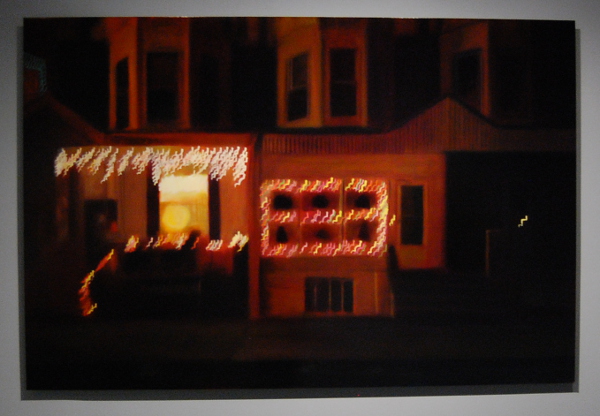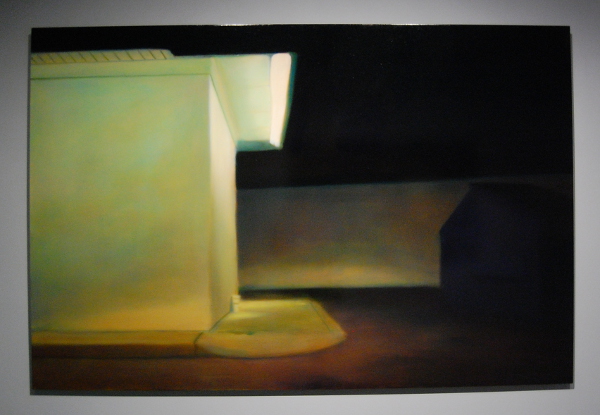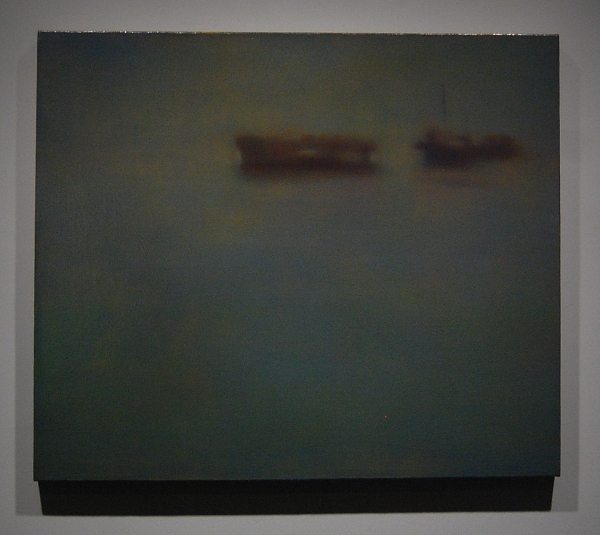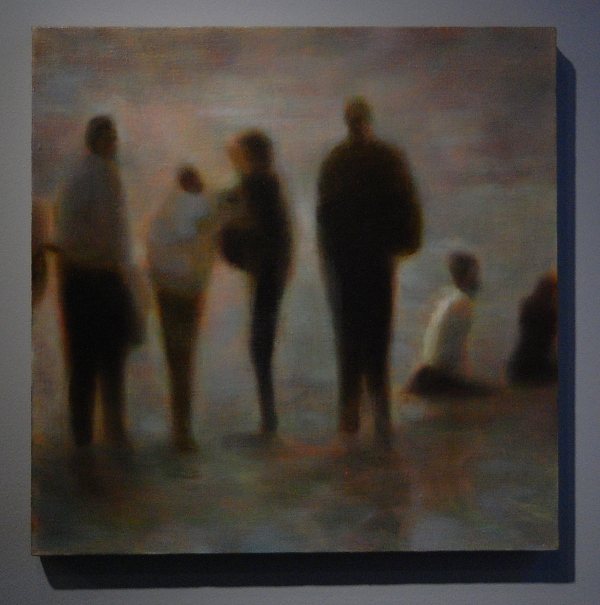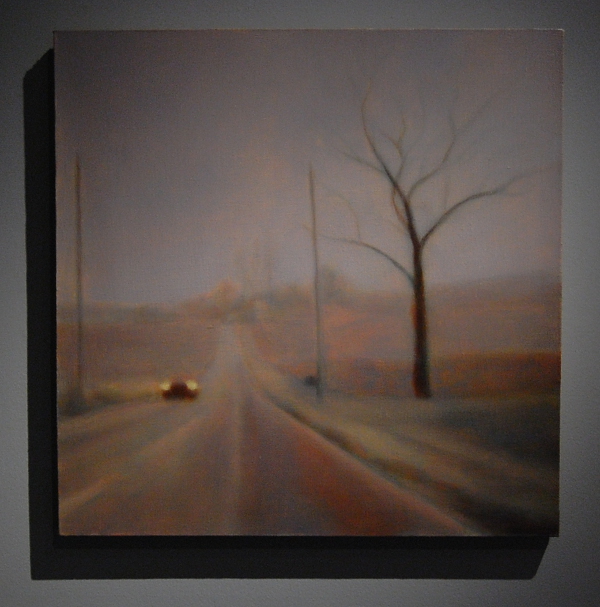
Keith Crowley and the shadows of the familiar at Tiger Strikes Asteroid
Keith Crowley at Tiger Strikes Asteroid provides a step into a hazy world that breathes uneasily between the snap of a shutter and the stroke of a brush. For his show “Unseen,” Crowley provides a mere five paintings, which prove to open themselves up to the viewer with seemingly endless depth. Indeed, as the viewer spends time before any individual work, the sparse settings tend to increase the mystery and magnitude that underpin every angle and object in the show.
As if his paintings weren’t enough on their own, Crowley completely reworked the Tiger Strikes Asteroid space in order to further accommodate his scenes. By covering the windows, painting the walls a light gray tone, and setting up all his own lighting, the room is more like an installation than a show of two-dimensional works.
Traveling down a country road marked only by two dim headlights from a lone car and the shadowy sentinels of power lines and trees, it’s hard to believe each and every one of us hasn’t been here before. This tugging nostalgia weighs down the entire show and allows visitors to gain a foothold of knowing before the carpet is swept out from under them.
Keith Crowley, “Nocturne (Vacant Fete).”
In “Nocturne (Vacant Fete),” we are greeted by glowing strands of Christmas lights on a series of otherwise unremarkable row homes. Their trails indicate the long exposure of a lens, but at closer examination, each is actually a carefully applied paint streak. Duped by the artist’s hand, the trust between painter and observer is cast into doubt, and the reddish hue lighting the buildings’ façade becomes more diabolical than festive.
Keith Crowley, “Nocturne (Effulgent Pause).”
Crowley does seem to channel David Lynch mise-en-scène to some degree, and the eerie green fluorescence of “Nocturne (Effulgent Pause)” stands as testament to this notion. This piece is both inorganic and rigid as much it is energetic and soft. It is almost as if the buzz of the electronic lights is audible as they slice into the soft shroud of the surrounding night. A dark blue dumpster hides to the far right, barely visible when contrasted against the reflective curb at the foot of the concrete structure. We are left in a state of urgency and longing, suspended in anticipation but submerged in the quiet stillness of the night and the steady exhalations of unnatural light.
Keith Crowley, “Nautilos.”
For the piece “Nautilos” we are left with practically no hint of its meaning beyond the appearance of a watery surface and two ship-like specters. As the morning fog gives way to these rusty hulls, we are beckoned away, transported to Maine or to Norway, but in mind only. This stoking of wanderlust seems both encouraging and slightly sadistic, but along with his empty expanses of road, Crowley seems intent to move his audience both emotionally and physically.
Keith Crowley, “Bathers (Harlequins).”
The faceless figures in “Bathers (Harlequins)” seem fully dressed, and look on passively instead of moving, let alone bathing. Reminiscent of a Boards of Canada album cover (see: Music Has the Right to Children), these drones are the only bodies in the show, short of your own, and yet they seem somehow even more lifeless than the tubes spewing acidic rays of light into the otherwise silent darkness.
Visit Tiger Strikes Asteroid through March 30 to enter Keith Crowley’s “Unseen” worlds of paint, light and suspense.
Tiger Strikes Asteroid is located at 319 North 11th St., on the second floor, Philadelphia; [email protected]; philadelphia.tigerstrikesasteroid.com.
Recent Content
-
Artsarticle ·
-
Artsarticle ·
-
Artsarticle ·
